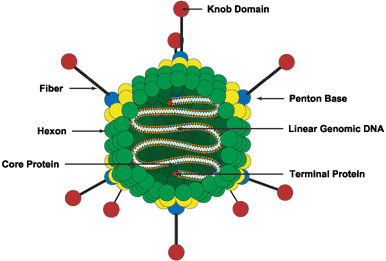
Adenoviruses were first discovered in 1953, by Rowe and his colleagues. These viruses were first isolated from Adenoid cell culture, hence the family name of Adenoviridae. At present, 51 distinct serotypes have been recognized and recorded.
In 1962, Trentin and colleagues made the important discovery that adenovirus 12 could induce tumors in hamsters in a laboratory setting. Since this discovery, adenoviruses have been suspected in inducing human cancers but have not been proven to definitively cause cancer in humans.
Experiments involving adenoviruses have also made important contributions to molecular biology. Most importantly, adenoviruses have helped scientist to understand messenger RNA splicing. By studying the mRNA produced by adenoviruses, scientists have realized that there were introns imbedded into these transcripts.